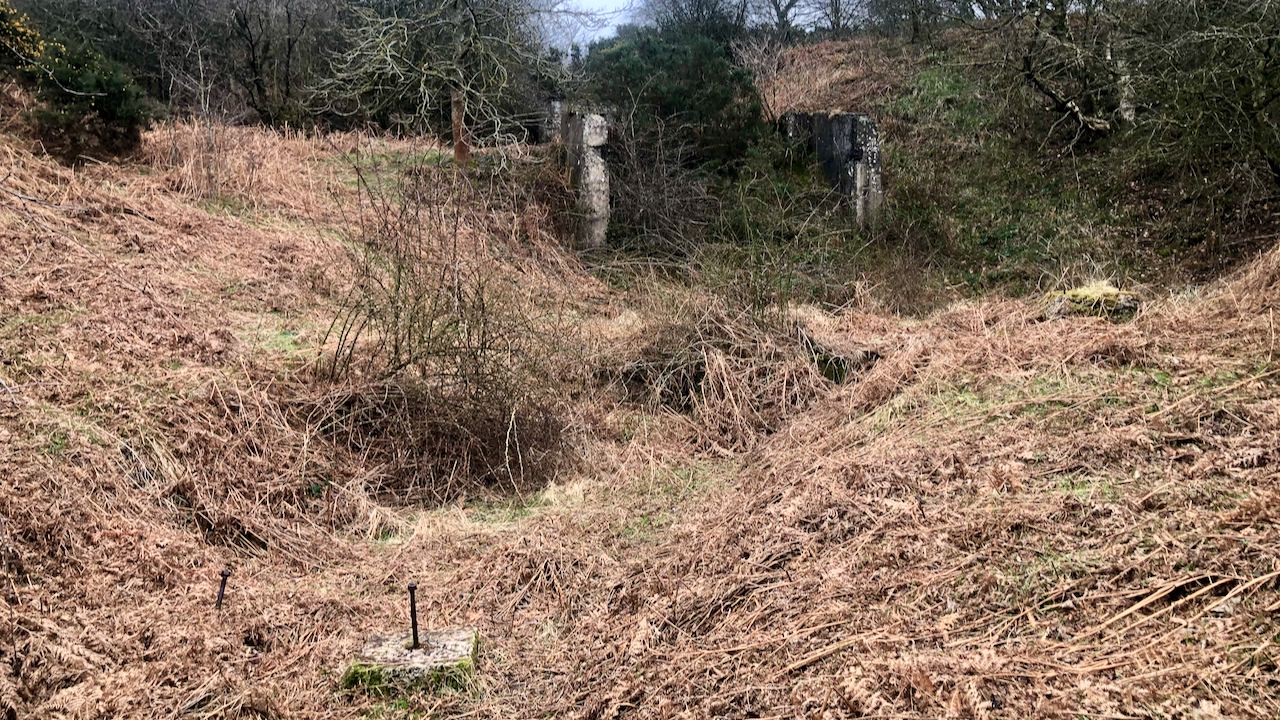I thought I would have a look around the Ayton Banks Ironstone Mine before the summer vegetation growth takes hold, only to find when I got home that I have already posted a photo of the old drift entrance. But that was an eternity ago, in January 2015.
Ayton Banks Ironstone Mine was the smallest of the three mines around Great Ayton, containing about 1½ million tons of rather poor quality ironstone1Tuffs, Peter. “Catalogue of Cleveland Ironstone Mines”. Cleveland Ironstone Series. 1996..
It was completely surrounded by the workings of the Pease & Partners’ Ayton Mine — that’s its official name which must have led to some confusion and probably one of the reasons why locally that was called ‘Monument Mine’2Pepper, Richard. “Glimpses of Monument Mine Great Ayton 1908-1931”. Pp 36/37. Cleveland Ironstone Series. Published by Peter Tuffs. 1996..
To give some comparison, in 1917, Ayton Banks Mine was producing 1,500 tons per week whereas Monument Mine was 2,100 per week.
Ayton Banks was operated by the Tees Furnace Company, which at the time also ran the Roseberry Mine.
The mine is pretty unique in that due to its constricted surface works, there was no room below the mine entrance to dump spoil below the drift entrance and so had to be transported up the slope.
Another difficulty, which Ayton Banks shared with Monument Mine, is that the whinstone dyke had to be penetrated in order to access the ore to the north of it.
Initially a branch line provided a connection to the whinstone quarry’s narrow gauge railway and thence onto the mainline sidings, but soon an aerial ropeway was constructed connecting with sidings near the foot of Cliff Rigg3Pepper, R. and R. J. Stewart. “The Mineral Tramways of Great Ayton”. Page 32. Narrow Gauge Railways Society. 1994. ISBN 0 9507169 5 2.. The bases for these ropeway towers can be seen today in Cliff Rigg Wood.
The featured image shows a concrete bunker and behind a chute where the ironstone was tipped into the ropeway tubs. In the cutting I counted at least three bases, possibly for the ropeway or engine or boiler foundations.
 Group of boy miners and their ponies at Ayton Banks mine. Left to Right: Harold Robinson; Henry Hogben; George Williamson; George Haswell; Robert Bennison; George Bailey; Marvin Porritt.
Group of boy miners and their ponies at Ayton Banks mine. Left to Right: Harold Robinson; Henry Hogben; George Williamson; George Haswell; Robert Bennison; George Bailey; Marvin Porritt.In the photo above, George Williamson seems happy, the others stare tentatively into the Edwardian camera unsure whether to smile. The ponies look quite comical under their skull caps.
The 1911 census records that Williamson was born in 1900, Hogben 1902 and Haswell 1899. So I guess the photo was taken about the mid-1910s.
In 1913, another pony boy, John Garbutt, aged just 14 so would have been born in the same year as Haswell, was killed in Ayton Banks Mine, crushed by a wagon. At the inquiry it was found that Garbutt was killed as “the result of his own improper conduct” presumably absolving the company of all responsibility4Durham Mining Museum (2022). Durham Mining Museum – Colliery Accident 1913. [online] Dmm.org.uk. Available at: http://www.dmm.org.uk/names/a1913-21.htm [Accessed 28 Feb. 2022]..
Perhaps the lads were thinking of their lost friend.
The mine had a short operational life. From 1909, at the height of the boom years to the post-war depression in 1921.
- 1Tuffs, Peter. “Catalogue of Cleveland Ironstone Mines”. Cleveland Ironstone Series. 1996.
- 2Pepper, Richard. “Glimpses of Monument Mine Great Ayton 1908-1931”. Pp 36/37. Cleveland Ironstone Series. Published by Peter Tuffs. 1996.
- 3Pepper, R. and R. J. Stewart. “The Mineral Tramways of Great Ayton”. Page 32. Narrow Gauge Railways Society. 1994. ISBN 0 9507169 5 2.
- 4Durham Mining Museum (2022). Durham Mining Museum – Colliery Accident 1913. [online] Dmm.org.uk. Available at: http://www.dmm.org.uk/names/a1913-21.htm [Accessed 28 Feb. 2022].

Leave a Reply